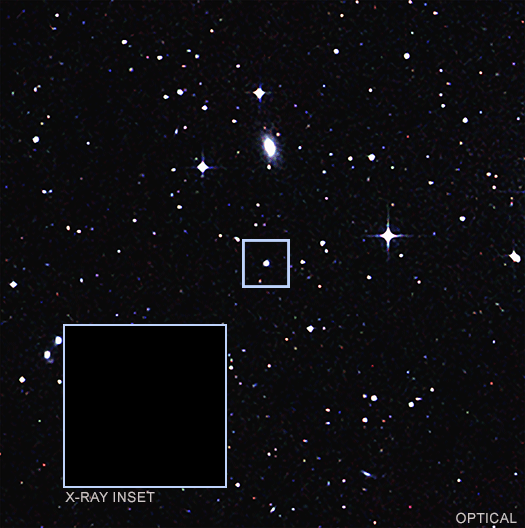Optical and X-ray view of active galaxy GSN 069

Date: 11 September 2019
Satellite: Chandra
Copyright: X-ray: NASA/CXO/CSIC-INTA/G.Miniutti et al.; Optical: DSS
The main panel of this graphic is a visible light image taken by the Digitized Sky Survey around the galaxy known as GSN 069. The inset gives a time-lapse of data taken by NASA's Chandra X-ray observatory over a period of about 20 hours on 14 and 15 February 2019. The sequence loops over again to show how the X-ray brightness of the source in the centre of GSN 069 regularly changes dramatically over that span.
ESA's XMM-Newton X-ray space observatory was the first to spot this phenomenon, detecting two bursts separated by nine hours on 24 December 2018. Scientists then followed up with more XMM-Newton observations on 16 and 17 January, finding five outbursts, and with Chandra less than a month later, revealing an additional three outbursts.
Although never before observed, scientists think periodic flares like these – referred to as 'quasi-periodic eruptions', or QPEs – might actually be quite common in the Universe.
